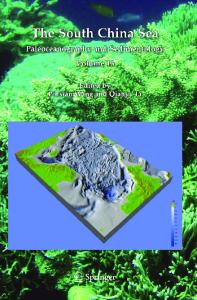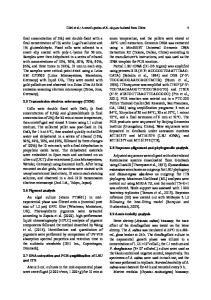The first report of two Sphaeromyxa species (Myxozoa: Bivalvulida) from the South China Sea: Sphaeromyxa scorpaena n. sp
- PDF / 1,266,741 Bytes
- 9 Pages / 595.276 x 790.866 pts Page_size
- 100 Downloads / 313 Views
FISH PARASITOLOGY - ORIGINAL PAPER
The first report of two Sphaeromyxa species (Myxozoa: Bivalvulida) from the South China Sea: Sphaeromyxa scorpaena n. sp. from long-fingered scorpionfish (Scorpaenodes albaiensis) and Sphaeromyxa theraponi from tiger perch (Terapon jarbua) Xinyu Qing 1 & Wei Chen 1 & Chao Li 1 & Chengzhong Yang 1 & Yuanjun Zhao 1 Received: 30 July 2019 / Accepted: 17 August 2020 # Springer-Verlag GmbH Germany, part of Springer Nature 2020
Abstract Two myxosporean species of the genus Sphaeromyxa were isolated from the gallbladders of marine fish in the South China Sea. Sphaeromyxa scorpaena n. sp. was collected from Scorpaenodes albaiensis Evermann and Seale, 1907. The mature myxospores were arcuate-shaped with tapered to pointed ends, and a length of 14.1 ± 0.7 (13.8–15.1) μm and a width of 5.2 ± 0.3 (4.9–5.8) μm. The polar capsules (PCs) were pyriform with a length of 3.2 ± 0.2 (3.1–3.5) μm and a width of 1.6 ± 0.1 (1.4–1.8) μm, and containing ribbon-like polar filaments irregularly folded 1.5–2.5 turns. Molecular characteristics and phylogenetic analysis based on 18S rDNA as well as morphological comparison confirmed that S. scorpaena n. sp. was a previously undescribed species. Sphaeromyxa theraponi, isolated from Terapon jarbua Forsskål, 1775, was reported for the first time from the South China Sea. The mature myxospores were slightly arched, tapering to bluntly rounded ends, with a length of 17.3 ± 0.9 (15.5–19.4) μm and a width of 4.8 ± 0.3 (4.1–5.3) μm. A sporoplasm was situated in the space between PCs in the myxospore. The PCs were pyriform, which contained ribbon-like polar filaments irregularly folded by 2–3 turns, with a length of 7.0 ± 0.5 (5.8–8.1) μm and a width of 2.6 ± 0.2 (2.2–3.0) μm. Our morphological and phylogenetic analyses suggest that the pointed ends of S. scorpaena n. sp. might be a secondarily acquired characteristic rather than an ancestral trait. Keywords Sphaeromyxa scorpaena n. sp. . Sphaeromyxa theraponi . Morphology . 18S rDNA . Phylogenetic analysis
Introduction The genus Sphaeromyxa Thélohan, 1892 (Myxozoa: Myxosporea) is placed in family Sphaeromyxidae Lom and Noble, 1984. The genus is composed of the species which possess elongated or sometimes slightly curved myxospores with tapering and truncated ends as well as two polar capsules (PCs) lying in the opposite with short, ribbon-like, and loosely folded polar filaments (Lom and Dyková 2006). The main criterion for
Xinyu Qing and Wei Chen contributed equally to this work. Section Editor: Christopher Whipps * Yuanjun Zhao [email protected] 1
Chongqing Key Laboratory of Animal Biology, College of Life Sciences, Chongqing Normal University, Chongqing 401331, People’s Republic of China
originally establishing the suborder Sphaeromyxina Lom and Noble, 1984 was the unique characters of polar filaments differentiating all other myxosporeans. Based on phylogenetic analyses, Kristmundsson and Freeman (2013) revised the genus Sphaeromyxa and reassigned the family Sphaeromyxidae in the suborder Variisporina
Data Loading...











